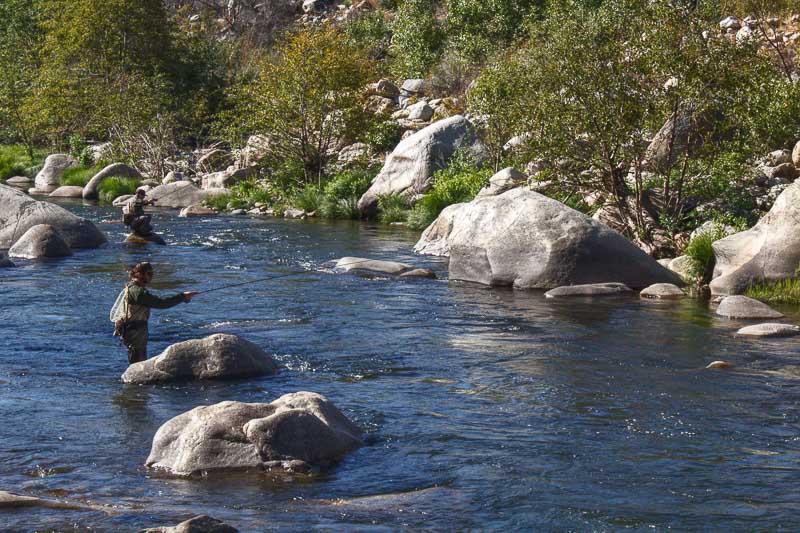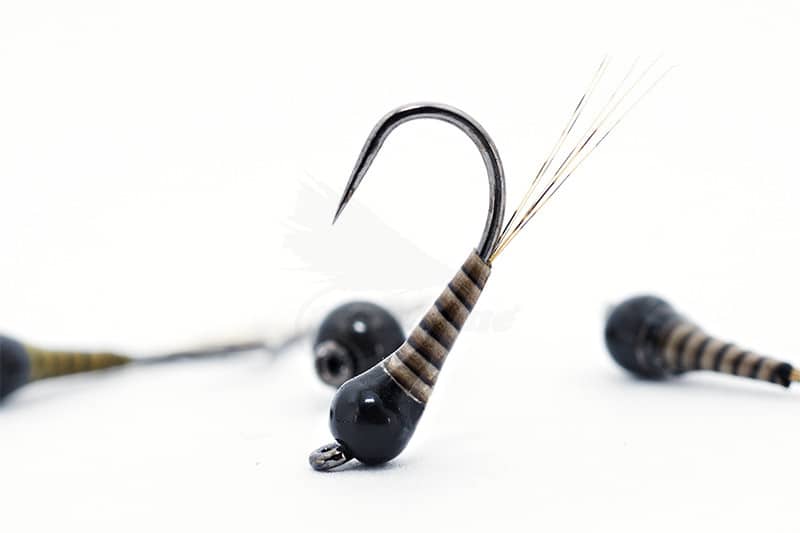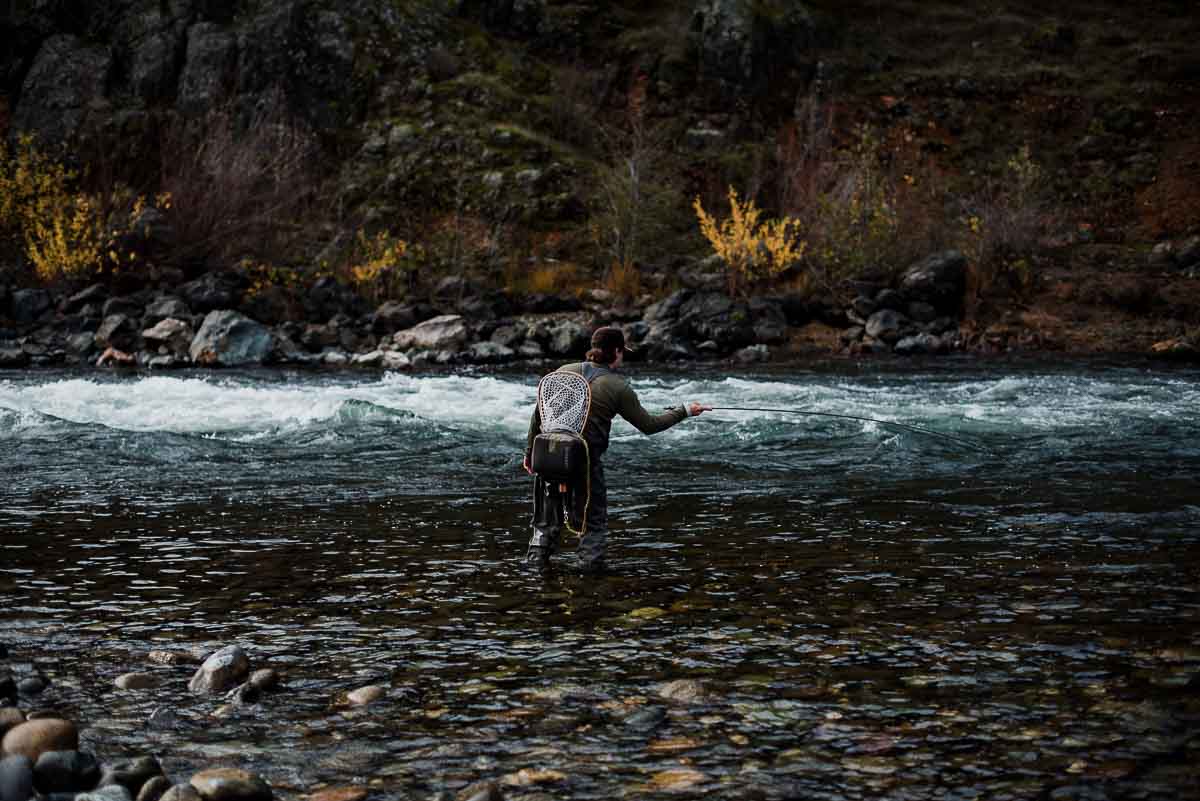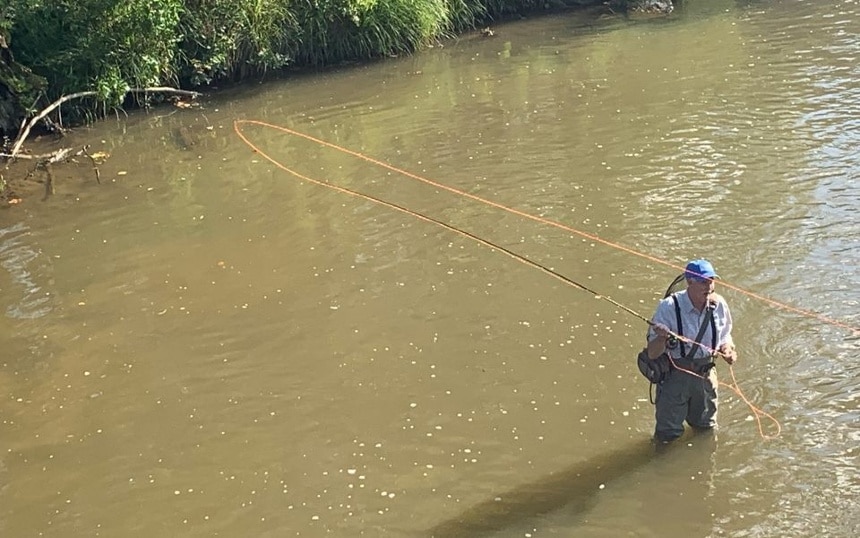Euro Nymphing
Competition teams from Czech Republic, France, Spain and Poland all want their claim to be know on some small characteristic of Euro nymphing technique. To dunk you in, I could give you a grand history of how the glorious Czech nymphing came to be, but I’d offend competitive anglers from a handful of European countries in the process. Instead, I’ll begin this series by saying this: since I ditched my indicator and morphed into a Euro-nympher, I have not been skunked on the water. Better yet, in the first three months using this technique, I landed my personal best trout three times over. Reinventing your fly fishing with the knowledge to come in the following four articles will turn you into what the head guide at Deep Creek Outfitters calls “a trout machine”. If you are unconvinced by your first trial on the water – that’s fine, more fish for my trout bum friends and me! Here’s the breakdown I will follow: flies, setup, reading water, and techniques. Before I get into flies, I’ll give you the basic idea behind the technique.
The Basics of Euro Nymphing Technique
Czech nymphing, or Euro nymphing, as we North Americans usually call it, takes fly fishing from sight to feel. A fisherman once said to me, “Wouldn’t you rather see a fish rise to a dry than feel it?” My response, “No, I’d rather hold the love of my life then look at a picture of her…haha!” With this technique, we have removed the needy balloon bobber, demanding constant mends, and replaced it with a 10 to 11-foot rod, equipped with a hi-vis sighter line. My finger never touches fly line, it’s always anticipating the feeling of a nudge on a leader, but often finds violent grabs. The goal is to feel my flies bounce from gravel, to rock, to stick, and finally the nose of a trout.
Presentation wise, there is no pseudo-drift or indicator-drag because, well, there’s no indicator. The rod allows a competitive drift at roughly 30 feet out, but really the method is meant for 10 to 15 feet in front of the angler. This means you’re moving from spot to spot quickly. However, where conventional nymphing cannot get a fly to the bottom, Euro nymphing champions. Early on, I remember catching myself mouth agape, one eye squinted with a fish on 10 feet in front of me, thinking how many fish have I walked passed in pockets with identical structure simply because the bottom was unreachable, the current too fast, the water too skinny? I don’t mind bringing the good news to you: in a healthy river, fish are everywhere, you just can’t get your flies to them.
Main Characteristics of Euro Nymphing Flies
So, what’s up with Euro nymphing flies? As I have said before, the point is to reach bottom and bounce the flies down there. However, it’s not enough to just add weight. In fact, with the most common Euro setups there should not be any weight on your tippet. Without meaning to offend the majority of the trout fishing world, split shots are barbaric. First, they thud into the water warning the most intelligent, seasoned, biggest fish: Hey, some unreal, foreign object has arrived! Then split shots jet to the bottom, taking tippet in a U-shape, causing just the right amount of slack to buffer the feel of an opportunistic take. Not to mention: they tangle line like hair, throw off a cast, frail tippet, and never stay in place.
Instead of dealing with all that fun, the Europeans decided to just put a slotted tungsten bead on every jig hook. Jig hooks, that’s the second ingredient to most Euro-flies. They ride with the hook upright! You snag less, lose less flies, and hook more fish in the nose. There is your genie in a bottle. The tungsten bead allows the flies to cut through the fastest moving water column, where indicators get swept into, and as a result, lift flies and split shot up into as well. Once the flies are down, it can be surreal for long time indo riggers to see line tick through water as white-water rushes past, but that’s exactly the life of a trout. They live with a fast-moving ceiling and a slow-tumbling floor.
The typical indicator rig needs the exaggerated upstream cast in hopes that flies will drift down to a fishable depth when they finally reach the target zone. With an indicator rig, it takes three casts to get the right 10-second drift. A drift where flies might reach near the bottom. Consider how many more good drifts you could make in a day, if every time you made just a 15-foot cast your flies reached the bottom within a few feet and bounced around the remaining 12-20 feet of the drift. Hypothetically, you might get 2 excellent drifts a minute with an indicator rig, and 6-a-minute with Euro nymphing. That’s roughly three times as many chances at fish. A three fish day becomes nine, a five fish day becomes 15, a 20 fish day becomes 60. These aren’t uncommon numbers.
In September, my buddy and I competed in the California Fly Fishing Open, hosted by a shop on the Kern River and Casting for Recovery. It was typical competition scoring: each fish was worth 100 points, and every inch worth 10. My buddy, Christian Biscotti and I, Euro-nymphed for four and a half hours and racked up close to 6,000 points between the two of us. We caught about 15 fish a piece. The next closest team recorded 2,700.

My Basic Euro Nymph Fly Recipe
Onto the look of the flies, without getting my neck cut open by some of the guys who taught us this method, I’ll give you what I can. There is so much you can find on YouTube just by typing in keywords like ‘jig fly’, ‘Czech nymphing fly’, ‘competition nymphing fly’, etc. With almost every pattern I tie, I use Coq de Leon quills for tails, spikey dubbing for the thorax, made slimmer by tightly wrapped wire, and a collar of wiry dubbing. That’s the basic recipe I follow. Mind boggling, I know.
I choose color based on hatches, seasons, and how much testosterone fish have during the time I am wanting to fish. I don’t often fish hot spots, and what some call “clown colors”, but I am not opposed. “Tag” is another key word that a lot of competition anglers utilize in recipes. A tag is basically a bright butt on a fly. The concept behind bright colors on flies is not simply “oh, a fish might think this is out of place and check it out with its mouth.” No, where these flies are headed – to the bottom, there’s less light in the water, so colors that don’t need as much light to show up are more favorable in many scenarios. Personally, I am more inclined to fish natural colors with a splash of bright, until they prove themselves to not be enticing enough for a fish to hit, then I switch to unnatural colors.
The main reason I fish this way is because the state I am from has 40 million people. Which means most systems are hit pretty hard in the peak seasons. Making fish more selective, especially the big fish. They have shed foolish curiosity and dialed into the entomological cycles. They know the color shades, shapes, and typical displacement of nutrients within the water column. Generally, if you don’t imitate all those things, you are gonna be stuck under 18 inches.
……………….
The great news is that Frosty Fly has started expanding its product selection to include Euro nymphing products this year. Check out their new collection of barbless competition hooks, as well as Euro nymphing flies: Perdigones, French nymphs, Czech nymphs, etc. More great stuff is coming in the future. I will personally be adding some flies to my own fly box from the site and using some of the materials as well.

As you may have noticed from this article, when it comes to flies, my general disposition is: presentation over pattern. I often fish the same 5 patterns everywhere I go, and they produce first, because this technique, when done right, puts them in the right location. In the next article I will break down how to setup a Euro-nymphing rig. Leave any questions or comments, I don’t mind responding! If you want the quickest response, check out my Instagram @beadheadednympher and leave me a direct message!
– Daniel





Very concise & informative article on Euro nymphing! After many years of using an indicator with marginal success & seldom catching 18+ inches, I’m convinced that Euro nymphing is the path to catching more fish & larger ones.